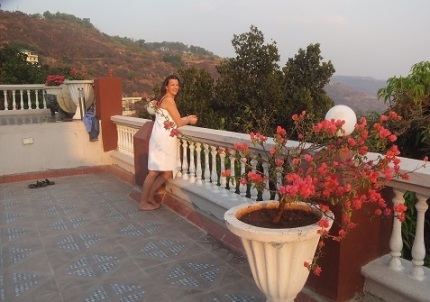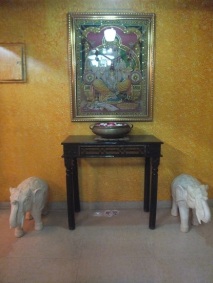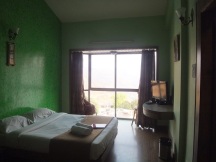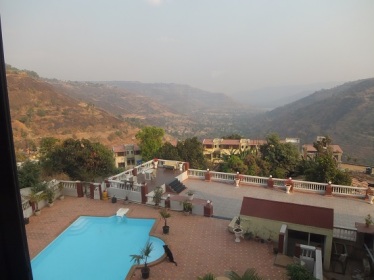27th February Abhi Pranayama
- Tamara Hockey
- Feb 27, 2016
- 11 min read

I’d like to start by saying that this was such an excellent class that it will be impossible for my notes to do it any kind of justice. Almost every sentence spoken carried something of importance and of course there’s no way for me to remember it all. For those who were also at the class this morning please do remind me of the bits I forgot or got confused and I’ll update the sequence for all.
The first phase of the class was quite active – padmasana in sirsasana and chair dwi Pada viparita dandasana (here she reminded us in Guruji’s earlier days this would have been full pose from the floor, legs extended) as we were lifting up for a prolonged stay in chair chatushpadasana, Abhi explained that Guruji had told her that the pranayama class needs to be active or we all fall asleep “Are you sleeping now?” she said. Resounding “No!”. There were many interesting teaching points (read full sequence by clicking link at bottom of page) – when we were in supta baddha konasana she asked us to observe the skin over the tailbone. Was it apparent that on one side the skin tends to spread and one side that skin tends to get caught? When this remains unadjusted, the side of the tailbone skin that is shrinking, that side lung will also shrink – observe that. Now take both the hands and simultaneously adjust both sides of the tail bone to spread (not one side then the other).We also had to adjust the skin of the neck so that the top half the skin moved towards the head and the bottom half belonged to the back. Try it! not using the hands but adjusting the neck, from the neck itself.
Her teaching technique today really allowed for a thorough understanding of what she was trying to convey. It was the first time all month I have been well enough placed in pranayama to properly explore what I was being taught. Abhi’s skill in teaching is remarkable.For someone with my type of brain her methods work perfectly – she knows she has to keep the class moving, she knows that she has to vary her techniques so that you never know what is coming next and that even liveliest minds will remain engaged throughout. She can hold a thought or theme seamlessly from one end of a class to the other, gradually building instruction upon instruction at a pace you can handle. To say I am impressed is an understatement.
She said, You may think that I am only giving you physical techniques but what about the nerves? When you adjust the skin there is a network of nerves – nerves belong neither exclusively to the physical body nor the psychological body. The nerves are the gateway – so when we make these physical adjustments we can adjust much more besides. Referring to the techniques she was explaining, she told us Guruji had said “Do you know how long I have saved you in your practice by showing you these things?” He has saved us years, decades even births by showing us – she reflected that we are blessed indeed to have lived in the same incarnation as Guruji.
We went home for a delicious lunch cooked by Sushila – over the month she has gradually understood our needs better and better. Lots of veg, more flavour less spice and the best ragi flour chapati I’ve had. Am definitely going to miss this aspect of our life here – super healthy and tasty vegetarian food appearing like magic in front of me

twice a day. We had ordered a car from Roots and Wings for the drive to Panchgani which turned up promptly and with a safe (by my new amended standards) driver. It took about two and a half hours, the last forty minutes climbing steadily upward. Many of the crevices of the hillside were on fire and at one point there was fire on both sides of the road. Apparently monsoon (or just after) is the best time to visit and it’s not hard to see why – at the moment the hillside is dry scrub and fires, whereaspresumably with the rain comes greenery and waterfalls.This is strawberry country and our eyes lit up as we saw the roadside lined with stalls displaying mountains of strawberries and chinese gooseberries – our two personal favourites.

I was not bowled over as we pulled up outside the Mount View Executive – it looked pretty ropey. However things improved dramatically once inside; the Manager Firdaus has excellent English, is completely switched on, friendly and helpful. He started out by offering to get us any special food or drink we would enjoy having during our stay

and we wasted no time dispatching him for fruit salad items! When he showed me to my room I actually did a little jump for joy – it’s not a posh hotel but it suits me perfectly here. A bay window above the pool with a panoramic view of the valley, a comfortable double bed and lovely bathroom. Louis, you would love it here – solid wooden doors, big snooker table, table tennis and a very friendly house Alsation. Had a swim, some yoga in the last of the day’s sun on the terrace and a game of table tennis with Jenny. Feeling good!

View from bedroom window.
Abhijata – 27th February 2020 – Restorative and Pranayama
Swastikasana Invocation – Without shrinking the lower back, lift up – the lumbar should not narrow when you lift the sides of the body up.
Prasarita Paddottonasana – 4 – 5 mins – Head supported on bolster / blanket etc if it does not rest on the floor. Hit the inner thighs outward and lift the shoulders upward, so that there is not a dead weight on the neck. Widen the back of the thighs so that the legs are stable to hold you there. Breathe in such a manner to relax and quieten – legs have to hold you firmly for the brain to release. Fold the elbows in baddha hastasana so that you are resting on the folded wrists – wrists should be in front of the head where you can see them.
Uttanasana – 4-5 mins – backs of the palms resting on the floor – crown of the head releasing towards the floor, the back of the ears (the area behind the ears) has to roll down from the bottom to the top. Exhale softer for the backs of the ears to roll down. Don’t push the eyebrows or the eyes towards the hair line – descend without resistance, the way a flower or a leaf falls from a tree. If I was going to adjust you, I would put my index fingers in your ears and draw directly down towards the floor. Release yourself as if I was giving each of you that adjustment. Now when you come up, don’t open the eyes and spring up. At the moment the chin is rolling towards the chest for the ears to roll? Then maintaining that head position, I want you to come up slowly so that the chin remains downward. And then slowly raise the head up and open the eyes and release the chin lock.
AMSvanasana – head supported.
1) Support the forehead so that the face is parallel to the floor. Raise both sides of the lumbar. 7th cervical, lift up into the body so that the upper back is concave. Open the armpits. Press the eyebrows more and more.
Now release and observe what is the mental state? Compare to when you came up from your long stay in uttanasana, what is the state of the brain? The uttanasana was quietening, but the AMSvanasana when done in in this way, is not quiet – infact this AMSvanasana makes the mind ‘fresh’ – observe that. Now repeat AMSvanasana
2) 4 – 5 mins – Back of the crown supported – you may well need less height under the head than the previous variation. Sides of the neck drop down, eyes closed. Head and neck like sirsasana.
Now come up and observe the state – we were very, very quiet.
So as practitioners of yoga we have to understand the different modes of doing. If we are in a dull state, the first method we should choose. If we have just had a big argument which method will we choose?
We know that pratyahara is withdrawal of the senses – here we learn how the sense organs have to be adjusted to bring about that state. The angle of the ears, eyes, forehead, eyebrows can be adjusted to bring a certain state of mind.
Janu Sirsasana – Head supported – I don’t want your back to be a hump so that your head ends up lower than your back body – in that case take more height, a chair if needed, upper back and back of the neck should be in one line – the back of the neck should be parallel to the floor. First of all, go for the physical freedom – lift up and move forward, chest forward, sides of the waist forward, move the back of the body to the front of the body and the front of the body forward. Now maintain that position of the back and stomach, but lessen the pulling of the arms, release the head down, widen the shoulders away from the sides of the neck. Exhale a little longer to move the trunk little forwards. Now if we were in the therapy class, I might put a weight on your upper back / dorsal closer to the ground. Take a few exhalations in that area to release down, as if I had put that weight there. So we begin that process of cleaning the brain.
Between sides: Most of the time the mind is scattered and when we have a scattered brain, productivity is less. Here the brain is channelled. Can you detect the difference from your mind of 6pm when we sat down to begin the class? Consciousness is of different types and we have to move from the dull mind to the restrained mind. Asanas arranged in this manner make the brain quieten and when the brain is quiet, we are better able to perceive what must be done. When we are involved in an action, there is no place for a scattered mind. We should not be thinking about the fruits of an action – for beginners – ok fine, it is motivating, but as advanced practitioners ….. within an asana, when the brain is quiet, we can receive the signals from the body – this side or that side is short, this hip is dropping etc and we develop skilfulness in action. Yoga is skilfulness in action and this has to translate into our everyday lives too. When the situation is stressful and many demands are placed on you all at once, the yogi needs to be able to take a step back from the situation and see it from all sides.
Sirsasana – using wall if the effort of balancing is going to be distracting – buttocks into the body and thighs back, be on the exact crown of the head. Come down!!
Repeat Sirsasana – Now this time you are going to place the head in such a manner that you roll the back of the ear from the bottom to the top, towards the chin side, as you place the head (so we were coming more towards the back of the crown). This may be uncomfortable in the beginning when you are learning this (n.b make sure the head still goes right back into the palms). Lips, cheeks, eyebrows – let them drop to the ground. Observe how the back body comes to the front body as you inhale and goes back as you exhale. Can your mind watch that action with the inhalation and be in sirsasana without that loss of the back ribs moving forwards? As you exhale, you can relax the face better, skin of the temples has to be thin and soft. Don’t make the root of the tongue, the jaw thick. After 6 minutes now of sirsasana the brain won’t be so fresh – body is tired, sense organs are starting to protest. The brain is programmed to protect you from discomfort, but if we always go for ease, lying in the bed all day – there is no progress. So the intelligence has to make the right choice. As we stay the breathing may become laboured, so consciously we have to relax the breath (a few minutes more). Now I won’t tell you when to come down – if there is physical pain and you are holding yourself there with willpower alone, then come down.
Now sit in vajarasana and observe the state (don’t move too much or you won’t be able to observe, if you make too many changes that observation is lost).
Ardha Halasana or full halasana – definitely a blanket under back of head – Start by interlocking the fingers and stretching them back to pull the shoulders back. Move the chest forwards so that chin comes into chest – ladies especially can lift the breast with their hands so that the chin can come into a better jalandhara bandha. Take your fingers to the base of the skull, slightly lift the head and lengthen the neck so that ear gets that same rotation again. Press the sacrum forward towards the stool to give a better chin lock, the throat has to rest at the base of the neck. Eyes closed and let the eyes move deeper into their sockets. Place the wrists on the eyes, drawing them slightly downwards, but not too much pressure on the eye – not a single cell of the eyes should get squashed – fingers on the forehead – like a simple sanmukhi mudra – this is learned before sanmukhi mudra as less skill is required. Before you place the palms, see that the eye has already receeded. Feel how the brain quietens and there is a kind of tranquilising effect – not tranquilised as in dull, but peaceful, calmer, relaxed – it changes the brain chemistry.
Sit quietly and observe the state.
Bolster / blanket savasana – As you place the head, circularise the ears from bottom toward the top. This savasana becomes the ground for the seeds of the pranayama to sprout. If we had taken savasana at 6pm, what vrittis would have manifested? Take the centre of the forehead down and then spread it to the sides – if we take the lump of dough and press it down, it spreads outwards? – so in that way release the forehead down, sides of the eyes towards the ears.
Take the inhalation in such a way as to spread the skin of your chest. Now earlier we only spoke of inhalation and exhalation, but here we have to observe 4 segments of breath – the inhalation, the small pause at the end of inhalation and before the exhalation, the exhalation and the pause after exhalation before the inhalation commences. I am not talking about a kumbak here, only the natural pause that has to be there. Observe. Guruji said that just by observing the breath, the breath itself changes (like a child that knows you are observing them).
Now after the inhalation and that slight pause, take a further inhalation, like an echo, though the supplementary inhalation will be less and it will come a level lower – the first inhalation on the surface of the skin and the supplementary inhalation will begin a layer deeper. Watch that.
As you become a better observer of your own body and breathing you become a better observer in other life situations, your perception improves, your reflection improves, you have focus, self-discipline – you no longer have that scattered mind.
Return to normal breathing and you will notice how even though the breathing is ‘normal’ the breath itself wants to stay with you, it is reluctant to leave (I also observed that it was reluctant to begin, the pause at the end of exhalation was also noticeably lengthened).
Roll over to the right side, coming completely off of the bolster. Normally we would have taken some time to lie flat in savasana, but in this case in order to undo that curvature of the back, now we’ll roll to the left (a few moments) but to come up, we have to roll back to the right, always coming up from the right side because of the nadis.



Comments